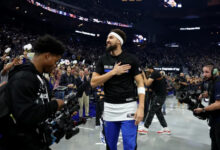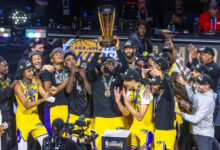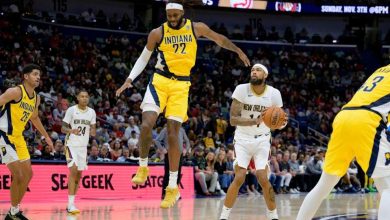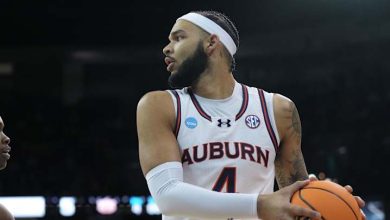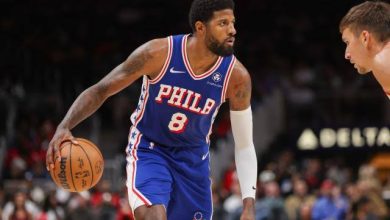Did Dyson Daniels Cross the Line? Hawks Guard Denies Controversial Gun Gesture Towards Pelicans After Clutch 3-Pointer
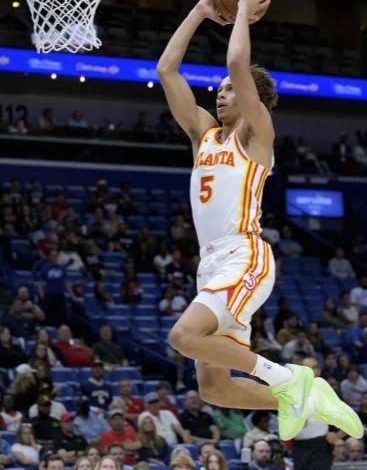
Did Dyson Daniels Cross the Line? Hawks Guard Denies Controversial Gun Gesture Towards Pelicans After Clutch 3-Pointer
In a season already full of heated moments and high-stakes matchups, the Atlanta Hawks’ recent victory over the New Orleans Pelicans took an unexpected turn. Rather than celebrating a hard-fought win, the aftermath saw Hawks guard Dyson Daniels facing scrutiny for what some fans and analysts perceived as an inappropriate gesture—a supposed “gun” motion he allegedly made after hitting a pivotal 3-pointer. Daniels quickly denied any malicious intent, stating that his gesture was misunderstood. This has sparked an intense debate on player conduct, the evolving sensitivity of audiences, and how leagues should approach celebrations that risk being seen as culturally insensitive or inflammatory.
A Moment of Controversy in an Intense Matchup
The fourth quarter between the Hawks and Pelicans had the tension, momentum shifts, and big plays that make basketball one of the most thrilling sports. Daniels’ 3-pointer put Atlanta in the lead, bringing the crowd to their feet and adding another impressive moment to his season. Cameras focused on Daniels as he raised his hand, a triumphant reflex that he insists was innocent and celebratory. Yet, in the age of social media, where moments are examined frame by frame, viewers were quick to interpret his hand gesture as a “gun” motion.
Videos circulated almost immediately, sparking social media discussions, with some fans and critics alleging the gesture was disrespectful or even threatening towards the Pelicans’ bench. Daniels’ denial—that he was simply “caught in the moment” and never intended any offense—hasn’t silenced the controversy. Instead, it’s intensified conversations about whether player expressions are becoming too closely scrutinized, especially in a league where emotion, intensity, and fan engagement are central to the sport’s allure.
The Role of Cultural Context in Professional Sports
The controversy around Daniels’ gesture touches on broader discussions about cultural sensitivity and appropriate conduct in professional sports. Basketball has a rich tradition of expressive celebration, with players using everything from hand gestures to body language to hype up fans and intimidate opponents. However, the current cultural landscape is more attuned to the power of symbols and gestures. In the United States, where concerns around gun violence are ever-present, some gestures are no longer seen as simply celebratory—they may be perceived as potentially harmful or inappropriate.
Historically, sports have often mirrored societal changes, and the NBA is no exception. With increasing emphasis on mental health, inclusivity, and social responsibility, the league has a vested interest in ensuring that its players’ actions resonate positively with audiences across the globe. A gesture that might once have been shrugged off as a part of sports culture is now weighed against the NBA’s commitment to these values. For fans particularly sensitive to issues of gun violence, even the suggestion of a “gun” gesture can feel unsettling.
The NBA has long championed individuality and freedom of expression, especially compared to other professional sports leagues. Its players often use celebrations and gestures to connect with fans, convey excitement, and build personal brands. The league benefits significantly from these displays, which are as much a part of the game’s identity as the skills and talents showcased on the court. Daniels, who has a budding reputation as a talented and passionate player, is part of this tradition. Yet his alleged gesture points to a growing dilemma: when does expression start to conflict with professionalism?
On one hand, fans and players alike appreciate the raw emotions that come with professional basketball. The back-and-forth energy, the intensity, and the personal celebrations are all part of what makes the game so engaging. On the other hand, there’s a thin line between freedom of expression and a responsibility to uphold an image that reflects the NBA’s core values.
Dyson Daniels’ denial of any intent to make a threatening gesture adds a layer of complexity. If he indeed intended no harm, as he claims, is it fair for fans and media to project their interpretations onto him? This isn’t just about Daniels—other NBA players have faced similar scrutiny, from intense stares to assertive gestures. Are audiences today more sensitive to these expressions, or are athletes facing undue pressure to restrain themselves?
What might once have been a forgettable moment is now magnified by the ubiquity of social media. Twitter, Instagram, and other platforms allow for rapid dissemination of clips, often stripped of context, with each viewer able to impose their own interpretation. This tendency has shifted the way fans experience the game, with every gesture, smile, or stare potentially becoming a talking point. Daniels’ alleged gesture was dissected within hours, igniting a firestorm of opinions from all corners of the basketball world.
Social media also enables fans to rally behind or against a player, creating a divisive atmosphere that puts athletes under constant scrutiny. A split-second gesture can become a defining moment in an athlete’s career, and the pressure to perform while being vigilant of every movement may inhibit players’ natural exuberance and expression. As the Daniels incident shows, public opinion can quickly spiral, putting players in an uncomfortable position where they feel they must constantly defend their actions.
The Broader Implications for the NBA and Player Conduct
In response to these types of controversies, some analysts are calling for clearer guidelines on in-game gestures and celebrations. With the NBA’s growing commitment to social responsibility, an incident like this might prompt league officials to consider creating stricter codes of conduct for players. They may look to other professional leagues that have taken steps to regulate celebrations, aiming to avoid situations where gestures might be misunderstood or viewed as potentially insensitive.
But critics argue that imposing additional restrictions on player expression could strip the game of its spirit. Basketball has always been about raw emotion, physicality, and energy. Over-policing player celebrations could make the game feel sterile, depriving fans of the spontaneous moments that make sports memorable. Fans often remember not just the points scored but the reactions—the looks, the hand gestures, the sheer excitement that brings the arena to life.
Are We Overreacting?
There is a growing divide among fans. Some argue that society has become overly sensitive, taking gestures and expressions too seriously and stifling the very qualities that make sports exciting. Others believe that players should be held accountable, especially when gestures could be perceived as promoting negative symbols, even inadvertently. Dyson Daniels’ case sits at the intersection of these two perspectives.
For Daniels, this incident may be a cautionary moment, emphasizing the importance of self-awareness. Although he firmly denies any intention to offend, he might now feel pressure to adjust his celebrations to avoid further misunderstandings. This isn’t an isolated case, either. Other players have been scrutinized for actions that, at least to them, seemed benign, suggesting a potential shift in how players may feel they need to manage their image both on and off the court.
Looking Forward: Balancing Emotion and Responsibility
The NBA has not made any official statement regarding Daniels’ gesture, and it’s unclear whether the league will pursue further inquiry. However, the incident will undoubtedly inform internal discussions about how to handle potentially controversial gestures. As sports continue to evolve alongside social norms, the NBA may find itself balancing player freedom with the responsibility to foster an environment that aligns with its public commitments to social values and inclusivity.
In the end, Dyson Daniels’ moment of controversy could serve as a turning point for the NBA and its players. As sports leagues across the globe work to align with shifting social expectations, this incident reminds us that the actions of players extend beyond the court. Whether Daniels’ gesture was misinterpreted or represents a need for greater awareness, this moment underscores the complex realities of being an athlete today.
For now, Daniels and the Hawks will move forward, focusing on their season and on keeping the spotlight on their gameplay. Yet this controversy might linger, serving as a reminder of the fine line athletes walk between expression and perception, and of the challenges the NBA faces in shaping the future of its image, both on and off the court.


